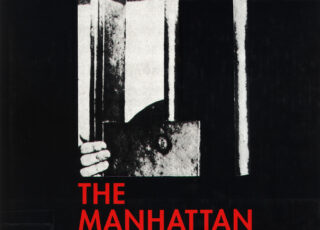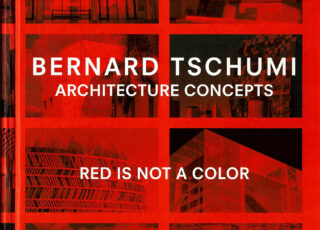Mattie, Architectural Competitions: 1792-Today
The rules governing competitions also vary enormously. It was the Institute of British Architects which first laid down guidelines in the 1830’s, formalising them in ...
Continue Reading →Agricola, De Re Metallica
Originally published in 1556, Agricola’s De Re Metallica was the first book on mining to be based on field research and observation — what today ...
Continue Reading →de Honnecourt, Sketchbook
Little is known of Villard de Honnecourt, apart from the fact that his Sketchbook is one of the most treasured documents in art history. Active ...
Continue Reading →Kerr, The Gentlemans House
After Scottish architect Robert Kerr (1823-1904) published this book in 1864, he was given a commission to build what would become his best-known ...
Continue Reading →Evans, The Projective Cast: Architecture and Its Three Geometries
Robin Evans recasts the idea of the relationship between geometry and architecture, drawing on mathematics, engineering, art history, and aesthetics to uncover processes ...
Continue Reading →Pastoureau, Bestiari del Medioevo
«A differenza di quanto generalmente si creda, gli uomini del Medioevo sapevano osservare assai bene la fauna e la flora, ma non pensavano ...
Continue Reading →Senseney, The Art of Building in the Classical World
This book examines the application of drawing in the design process of classical architecture, exploring how the tools and techniques of drawing developed ...
Continue Reading →Krier, The Architecture of Community
Leon Krier is one of the best-known—and most provocative—architects and urban theoreticians in the world. Until now, however, his ideas have circulated mostly ...
Continue Reading →Nancy, The Ground of the Image
If anything marks the image, it is a deep ambivalence. Denounced as superficial, illusory, and groundless, images are at the same time attributed ...
Continue Reading →Jacobson, Slow Manifesto
In the fall of 2007, Lebbeus Woods (1940–2012), long admired for his visionary architecture and mastery of drawing, began a blog. Part forum ...
Continue Reading →Most liked books

Tschumi, The Manhattan Transcripts
May 23, 2025
Tschumi, Red is not a Color
May 23, 2025Recent Comments
Categories
- _English Language 1454
- _French Language 55
- _German Language 69
- _Italian Language 54
- _Latin Language 45
- 1750-1850 64
- 17th Century 77
- 17th culture and other cities in Italy 5
- 19th century 45
- 20th Century 151
- 21th Century 75
- Aesthetics 5
- Afrofuturism 3
- Ancient Literature 37
- Anthropocene 1
- Anthropology 3
- Architectural Theory 228
- Architecture + Philosophy 37
- Architecture and Literature, Symbolism 36
- Art 13
- Art Theory 110
- Artificial Intelligence 11
- Artists in Rome 20
- Astronomy 2
- Autobiography 1
- Bernini 19
- Biology 5
- Catalogue 2
- Christian Iconography 18
- Christianity 13
- Cinema 2
- City 45
- Classical 1
- Construction 1
- Contemporary 2
- Design 29
- Digital Architectonics 26
- Drawings 41
- Economy 31
- Empire, Architecture + Catholicism 14
- England & British Isles 26
- Enlightenment Library 127
- Evolution 6
- Fashion 6
- Feminism 20
- Film Festival 1
- France 47
- Gender and Sexuality Studies 5
- Gothic 13
- Greek, Roman Library 99
- Historiography 43
- Humanism 12
- India 5
- Islam 5
- Italy 80
- Landscape Architecture 8
- LGBT 1
- Libraries 0
- Linguistics 6
- Literary Criticism 11
- Literary Theory 82
- Literature 95
- Low Countries (Benelux) 14
- Mathematics 61
- Medicine 4
- medieval library 38
- medieval literature 12
- Modern 51
- Monuments + Conservation 27
- Music Theory 1
- Mysticism 4
- Mythology 19
- Nature, Ecology, Animals 4
- Neurobiology 1
- Opera 5
- Philosophy 346
- Physics 16
- Poetry 6
- Politics 76
- Popes, Vatican, Rome 27
- Portrait, Sculpture, Materiality 56
- Post-Modern 22
- Programming 2
- Psychology 22
- Religion 23
- Renaissance 86
- Renaissance Library 80
- Rhetorics 1
- Roman Architecture 21
- Rome 122
- Schinkel 8
- Science 57
- Sociology 21
- Sound 7
- Sources 56
- Spain 10
- Switzerland 48
- Uncategorized 73
- Urbanism 53
